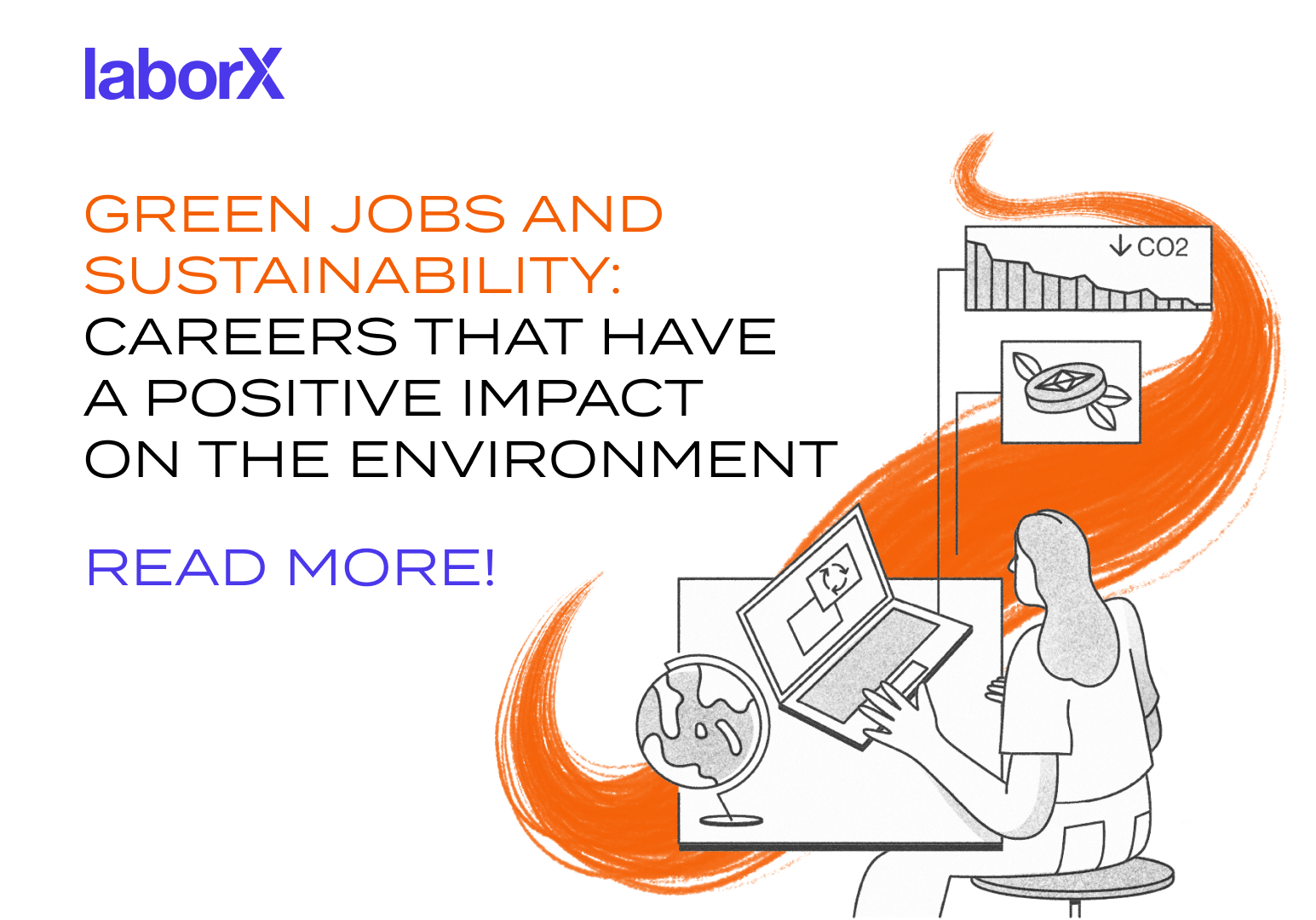What you do, and Where you do it, matter to the environment. But you may also be overlooking How it’s done…
Thanks to Bitcoin’s power-hungry infrastructure, crypto has long had a reputation for being bad for the environment. Taking a step back, though, a little digging suggests crypto’s overall environmental impact is not as bad as claimed. What’s more, the culture and work habits of the blockchain sector are far better for the environment than those of the TradFi world.
Best of all, Web3 might even have some answers to some of the hard-to-solve problems that drive climate change.
Blockchain And The Environment
The time was when all the headlines about crypto were negative. Not only was it ridiculed as being incredibly volatile and risky as an investment, but critics drew attention to Bitcoin’s terrible environmental credentials. In 2022, the Columbia Climate School accused: ‘Bitcoin, the world’s largest cryptocurrency, currently consumes an estimated 150 terawatt-hours of electricity annually — more than the entire country of Argentina, population 45 million. Producing that energy emits some 65 megatons of carbon dioxide into the atmosphere annually — comparable to the emissions of Greece — making crypto a significant contributor to global air pollution and climate change.’ (They neglected to mention that those same Argentinians were buying and mining BTC as a hedge against rampant inflation in their country, but that’s a different matter.)
Elon Musk famously poured a large slab of Tesla’s treasury into Bitcoin in 2021, and was promptly derided for using the proceeds of a company that created eco-friendly electric cars to buy dirty crypto. The company stopped accepting BTC payment soon after, with Musk stating it would only start again once Bitcoin miners used at least 50% clean energy and the trend was heading in the right direction.
Well, things have changed a lot in the last two years. Only last week, Bloomberg Analyst Jamie Coutts noted the improvements that have taken place since then, particularly in the area of electricity generated by fossil fuels, with China’s mining ban playing a big role in that. Bitcoin has now decisively passed the 50% sustainable energy threshold. (It remains to be seen whether Musk will restart BTC payments.)
What’s more, one year ago Ethereum transitioned from proof-of-work to proof-of-stake consensus. The Merge saw the network’s energy consumption drop by 99.9%, as energy-intensive ASICs were replaced by validating nodes that needed no more than a hosted server to operate.
Few new cryptos employ PoW these days. There are no plans to change Bitcoin’s consensus (Bitcoin’s inertia is a feature, not a bug; making unnecessary alterations to a half-trillion-dollar network is not advisable), but the teams who launch new cryptos are keen to keep it clean.
Sustainability is very much on the agenda for crypto, especially following Ethereum’s Merge, with other platforms going further in terms of how they reduce their carbon footprint – and explain what that means to the world. Take Flow, which is specifically built with the environment in mind. The whole network uses a total of 0.18 gWh/year – enough to drive an electric car 600,000 miles. It sounds like a lot, but it’s not much for a blockchain platform capable of supporting high-volume decentralised services. Minting 12 NFTs on Flow uses about as much energy as a single Google search. A cup of coffee carries the energy required to mint 1,250 NFTs, and a one-minute hot shower is equivalent to minting 382,000 NFTS. The industry is changing fast, and for the better.
The Environmental Benefits Of Remote Working
It’s not just the infrastructure – the blockchain networks – of Web3 that are driving down their energy usage. The dispersed nature of the space, and the norm of remote work, means that almost any job will have a better carbon footprint than its TradFi analogue. Decentralised networks and decentralised communities require decentralised teams, and even if projects do have physical offices, the majority of their staff are likely to work from home.
This in itself has a huge impact on the environment. Consider that the average American commutes to work by car for almost an hour a day, or over 250 days per year, covering 8,000 miles in total. That’s 3.2 tonnes of carbon dioxide, for each commuter, every year. Now consider the fact that there are 135 million Americans in full-time work, and you start to see what a problem commuting is, responsible for 400 million tonnes of CO2.
Working at home solves that problem at a stroke. And there’s more: all those offices take energy to heat and power, with all that embodied energy that goes into construction and hardware of various kinds. Of course, if you’re working at home, your power use there will be somewhat higher, but it doesn’t come close to the carbon cost of having a dedicated office building to work in. As a rough guide, every office worker costs around two-and-a-half tonnes of carbon per year.
Additionally, using cloud technology – as you tend to a lot more, when you work remotely – is more efficient than using physical machines on-location. Social media company Buffer (a fully remote organisation) calculated that remote work practices saved almost a ton of carbon per year, across commuting, heating, and data centre use – and that’s still with two annual company retreats, which entail almost 5 tonnes of carbon per person in air travel!
Precise figures aren’t easy to find, but in the UK, the COVID pandemic provided some interesting numbers. The Office for National Statistics found that household emissions fell by 10% in 2020, driven by the drop in commuting and travel, even though people were spending more energy heating their homes. 15 million tonnes of CO2 was saved, equivalent to 3% of total emissions for the country.
Working from home is clearly a winner for the environment, and comes with all kinds of second-order benefits. For example, lower use of offices frees up buildings for conversion to accommodation, reducing the carbon footprint of building new houses. Since so many office buildings remain under-occupied since the pandemic, this is something that landlords are actively being forced to consider. The continuation of the work-from-home trend has led to £2 billion being invested by landlords to convert under-used office space in London alone.
Blockchain As A Key Eco Technology
The Web3 industry looks set to be on the right side of history as far as the environment is concerned. With mining-related carbon emissions trending downwards, there’s less and less reason to claim that the technology is intrinsically harmful to the planet. Moreover, Web3’s preference for remote work shows no signs of changing. Post-COVID, employees appreciate the option to work more flexibly, and as more TradFi businesses are seeking to pull their teams back into their physical offices, there’s an opportunity for Web3 companies with a more forward-thinking view to attract talent.
Beyond these factors, though, it looks like Web3 technologies might have a core role to play in the fight against climate change, in several different ways.
Financing Change
Blockchain’s first use cases were financial, and this remains an important part of the solution to global environmental challenges.
In 2022, the World Economic Forum launched the Crypto Sustainability Coalition, which highlighted some of the real-world applications that blockchain offered. One area of concern is the rapid allocation of funds to wherever they are needed the most – for example, renewable energy projects. When this is left to large, bureaucratic, centralised systems (like nation states), it tends to happen slowly and inefficiently. And yet, until recently, there have been no effective ways to coordinate backers and match investment to the right places. As WEF explained, ‘Climate change is a global coordination problem. The system has failed to coordinate effective policies and capital investment into the commitments necessary to address the most pressing threat to humanity… Global coordination technologies that can transcend the mass bureaucratization of climate action are urgently needed. This is where Web3 innovation could help.’
However, blockchain offers more than connecting investors with opportunities, environmental or otherwise.
Global Coordination Technology
The US has proven hostile to the adoption of crypto technologies, with the SEC taking heavy-handed enforcement action against a number of blockchain businesses. Nonetheless, the government has grasped the importance of Web3 in the fight against climate change.
A year ago, the White House Office of Science and Technology Policy (OSTP) released its report, Climate and Energy Implications of Crypto-Assets in the United States. This drew attention to crypto’s shortcomings, including (predictably) its energy usage. However, it balanced this with consideration of the use cases for blockchain in monitoring or mitigating climate impacts. Carbon trading was one clear application, and in particular blockchain-based systems that might contribute to the ‘robust market infrastructure’ required for global carbon credit trading.
The potential that Web3 technologies hold for environmental benefit has led to the emergence of the ‘regenerative finance’ or ‘ReFi’ movement, which the Ethereum Foundation describes as ‘a set of tools and ideas built on top of blockchains, that aim to create economies which are regenerative, rather than extractive or exploitative’. The development and use of Digital Carbon Markets (DCM) are one of the main use cases for ReFi. Projects like ReSeed, KlimaDAO, Toucan Protocol, and many others serve this aim by providing carbon bridges that tokenise existing centralised carbon credits, verify projects that provide carbon credits, and supply liquidity so credits can always be traded efficiently on transparent global markets.
Another use case highlighted by the White House’s report is blockchain’s role as an enabling technology for distributed energy infrastructure. As Forbes notes, blockchain has potential use cases in pollution monitoring and tracking the sustainability of different products. (Provenance tracking is already a major use case for blockchain, powered by the transparency and immutability of decentralised ledgers.)
The same real-time visibility of data makes blockchain the ideal way to react to changes in supply chains and networks, including energy systems. Mark Radka, Chief of UNEP’s Energy and Climate Branch, comments, ‘The world needs to almost halve emissions over the next eight years to stay on track for a 1.5C world, while at the same time expanding access to energy to bring hundreds of millions of people onto the grid. Blockchain technology can play a part by making possible more accurate load monitoring, generation, and distribution in the grid through efficient use of data.’
Such systems are already being trialled. California’s Flex Alert system, which is built on the blockchain, enables electricity grid operators to securely interact with customers in different ways to manage demand, including issuing requests for reduced energy use during emergencies, and gaining critical information about the load on the grid without compromising customer anonymity.
Smart grid technology has the potential to coordinate the participation of millions of distributed energy resources (DERs), including electric vehicles, solar power systems, fuel cells, and residential and commercial battery systems, to improve electricity grid resilience and reliability. The report notes that blockchains hold potential as a means of registering, authenticating and managing the DERs that make up a smart grid, which will become more and more important as new devices come online: over 100 million new storage devices are forecast to be connected to the grid by 2040.
Conclusion
Climate change is a vast, collective problem, and one that cannot be solved by simple technical fixes. It requires global agreement, as well as action on the national and local level.
Blockchain, in its role as a global coordination technology, offers new possibilities in answering some of the problems of climate change. It is not a panacea, but does at least provide the infrastructure for hosting solutions that are fit for purpose. Centralised systems inherently fail to achieve this.
None of these solutions are without their own challenges and drawbacks, but it’s clear that Web3 will, one way or another, make up part of humanity’s toolkit for combating climate change.





